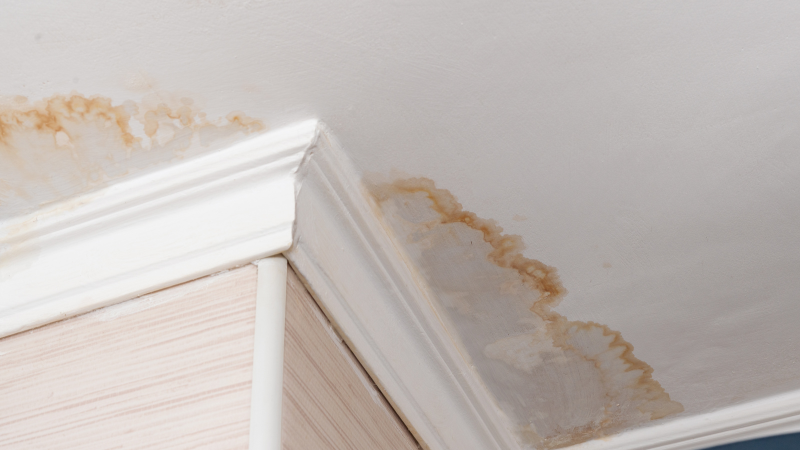Listed here below you can find some professional insight regarding How to Repair and Prevent Bathroom Water Damage.

The bathroom is extremely susceptible for damp buildup and prospective water damages due to the regular use water in it. This write-up provides basic assessment techniques to help finding water damages hazards.
The regular use water in the washroom makes it extremely susceptible for wet buildup and potential water damage. By checking it regularly, you can reduce water related damages.
The complying with collection of examinations is easy to perform as well as must be done when in every 3 months in order to maintain your bathroom in good shape and to avoid prospective water problems brought on by the bath tub, the shower, pipeline joints and also plumbing, sinks, cabinets, and the toilet
Do not overlook carrying out these evaluations as well as be complete while doing them. Bear in mind that these basic assessments can conserve you a great deal of cash by supplying very early signs for water damages
Sinks as well as Cabinets
Sinks as well as cupboards are subjected to wetness as well as humidity everyday as well as are typically neglected. Examine frequently under the sink as well as on the countertop above it. Repair any drip in the trap as it might recommend drain problems. Look around the sink, sluggish draining pipes may show an obstructed drainpipe. Replace sink seals if they are cracked or loosened.
Tub as well as Shower
The shower and bath tub need special focus as well as maintenance. Examine the floor tiles as well as change if split. Ensure that there is no missing grout in between the ceramic tiles. Examine and also change cracked caulking at joints where the wall surfaces satisfy the flooring or the tub. Clogged drains pipes as well as pipelines issues will protect against the tub from drying out as well as may show major troubles below the bathtub. Talk to a professional quickly to avoid structural damage. Focus on discolorations or soft locations around the bathtub wall surfaces as they may suggest an internal leakage.
Plumbing
Signs for water damage are difficult to detect considering that most pipes are installed inside the walls.
Pay unique interest to floor covering and wall surfaces moisture as well as stains as they may show an unnoticeable plumbing trouble. Check dampness levels in adjoining areas as well.
The Bathroom
The toilet is a susceptible water joint. Check the water lines as well as look for leaks around the bathroom seat, in the hose, as well as under the water container. If you identify any indications of dampness on the floor around the commode, check for leakages in the toilet edge as well as container seals.
Understand that hanging commode bowl deodorants raises the chances for blockages.
Water Damage Signs In The Bathroom To Avoid Cleanup
Musty smell
This is one of the easiest signs to catch because musty smells are so odorous. The damp, earthy, moldy smell should be a big red flag. The smell will develop when moisture gets trapped in surfaces, and begins to facilitate mold growth. Leaking pipes under cabinets, inside walls, and behind shower fixtures will cause moisture to stay trapped and not dry, which will lead to mold growth and spread. As soon as you notice any musty smells in your bathroom, have it checked for hidden water damage and cleanup signs.
Visible mold
If the smell isn’t there to give it away, sometimes you will actually see mold growth. Finding mold in your bathroom is a serious problem, because mold is very harmful to your health. By the time mold growth is visible, it also means that water damage has already occurred and been present for some time. The only way the mold problem can be resolved is to find the source of the moisture and get it stopped. To safely and adequately remove mold, you need to have professionals handle the remediation. Do not waste any time in getting mold problems addressed, fixed, and sanitized so that you can protect you and your family from the many respiratory symptoms caused by mold exposure.
Damaged floors
Bathroom floors should be able to withstand some exposure to water while still remaining in good condition. However, when excess exposure or water leaks occur, they will begin to damage even the most water-resistant flooring. If you notice any cracking, bubbling, staining, or warping on your bathroom floors, there is probably a water leak somewhere causing the distortion. If you notice areas of the floor have become softer, or even have a spongy feeling, there is probably damage to the subfloor. Subflooring is typically made up of plywood. When plywood is exposed to water or moisture, it will absorb it. Once it has become saturated, the weight of the excess water will cause the wood to swell and soften. Check the floors in your bathroom frequently to catch any of these sings before they lead to damaged subflooring.
Changes on walls
When water leaks behind walls, it will cause changes in the drywall. Peeling plaster, blistering paint, and soggy wallpaper are all good indicators that excess water is building up behind the wall. Water leaking behind drywall will cause it to swell and be soft to the tough. If you start to notice gaps along the trim of your walls, or where tile meets the wall, it could also be a strong indicator that there is a leak behind the wall. Any changes, distortion, or damage on the walls should be evaluated as soon as you notice it to prevent further water damage and cleanup.

I discovered that article on Common Causes of Water Damage in a Bathroom when looking around the search engines. Enjoyed our blog posting? Please share it. Help other people check it out. Kudos for your time. Please come by our website back soon.
Contact Us